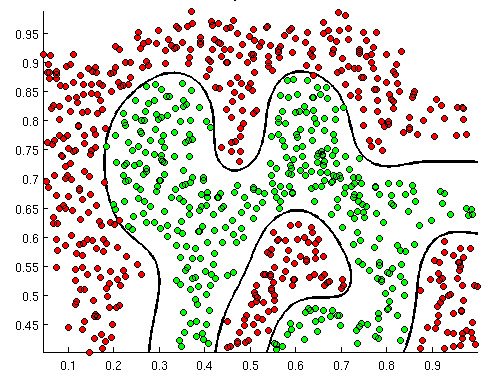Can Steemit help stop the spread of diseases?
We all know what Twitter is. But do we know the alternate use of Twitter in solving health issues? Can Steemit serve the same purpose?
The Treasures in Social Media Platforms

In the 21st century, we can't live without the Internet. We communicated with others through phone calls, emails or SMS texts in the past decade. But with the rise of social media platforms, we now are connected to each other in new ways: we post our stories on Facebook, upload cool pictures on Instagram, tweet our updates on Twitter and share great articles on Steemit. According to Zephoria, a digital marketing consultancy, the number of active Facebook users in March 2017 exceeded 1.94 billion. We know that social media platforms is a sea of data, but how can they be fully utilized?
First, how can those data be useful at all? On one hand, the data are easily accessible. Once we post something public, everyone else on the Internet can get the messages instantaneously; on the other hand, your updates on Facebook or Twitter reflect what's happening on you or around you. In the past it was hard for you to know what's going on for buddies around the world but now you can get such information from any of the social media platforms.
The basic unit of every economy is its people. If we can know the micro-level information of what's happening on every person (at least those who have active online presence) in the world, is it possible that we can make good use of it to produce accurate macro-level predictions which can hardly be done before? The answer is a definite YES.
Using Twitter to detect influenza: the magic of artificial intelligence again!
An insightful study
Epidemics is always a highly concerned issue. Every government hopes to detect the potential outbreak of diseases before its widespread to make the necessary preparations in advance. Lemme share with you a study by Eiji Aramaki, Sachiko Maskawa and Mizuki Morita in Japan who made use of Twitter for early detection of influenza. The original paper can be found here.

The idea
In their research, they first collected 300 million tweets from Twitter and filtered out 400,000 tweets which contained the word "influenza". Of course, not every tweet with the word "influenza" is relevant. An example from the paper is that some people might just tweet some news reports or general statements containing the word "influenza". What the researchers really wanted to get were the tweets which could reflect that the tweeters or people around them really caught a flu, for the reason that the frequency of those tweets could be a signal of the outbreak of a serious influenza!
The researchers thus classified those relevant tweets as "positive" and others as "negative". Did they do the classification by eyes? Here comes the role of machine learning! They first manually categorized 5,000 of the tweets into positive or negative. Then, they made use of the 5,000 classified tweets to train a machine learning model called support vector machine (SVM).
As a simple example, if you tell a SVM the sepals' and pedal's lengths and widths for hundreds of flowers and also let it know the species of each of the flowers, then the model will learn the patterns and know how to classify the flowers when you feed it again with new data. Similarly in the research, the researchers extracted features from each of the 5,000 pre-classified tweets which were then used to train a SVM. Then, the trained model was able to classify the remaining 395,000 tweets into positive or negative with high accuracy.

Illustration of SVM classifying the data into 2 groups based on the data features
(Image source: http://openclassroom.stanford.edu/MainFolder/DocumentPage.php?course=MachineLearning&doc=exercises%2Fex8%2Fex8.html)
The findings
The study found that the appearance of tweets classified as positive is highly correlated to official medical and clinical statistics from Japan, which in other words shows that Twitter is helpful for early detection of influenza!
Yet, the authors of the research paper also pointed out the room for improvement. For instance, there were some periods of time during the study where lots of news about H1N1 were reported, which distorted the results if not handling those periods specially.
Nevertheless, this study is still a meaningful application of social media and AI to solve a worldwide health issue!
Can Steemit serve the same purpose?
Drawback of mainstream social media platforms
There are dozens of so-called content farms, which spread inaccurate or even false information every day on the Internet. What's interesting is that those articles are widely and rapidly spread through social media platforms! Although tech leaders like Facebook have been working on the methods to deal with fake news and information, currently incorrect information is still one of the main issues to hinder good-quality data analytics on social media data.
What makes Steemit different?
Steemit has a well-maintained voting system to differentiate valuable articles from posts of low quality. Machine learning models are not crystal balls. They need to learn from data. To be more precise, we have to train the models using good-quality data. The Steemit's voting mechanism can naturally filter out useful information which can then be taken as inputs in data analytics projects. On the other hand, the Steem rewards also encourage we Steemians to keep sharing only the information that we have judged carefully, ensuring both the quantity and the quality of the posts on Steemit.
More data mining!
I'm thankful to buddies who keep producing summary statistics for us to better understand Steemit. Yet, we should also involve in more data mining projects to dig out great insights that have not yet been discovered. Who'll know that Twitter could help detect influenza in Japan if Eiji Aramaki, Sachiko Maskawa and Mizuki Morita had never initiated the study? With a number of great APIs, data flowing into Steemit every day are easily accessible. Perhaps Steem's posts with thousands of upvotes of a particular type are related to some world events to some extent, but who knows if we don't try to dig it out?
Growth of the Steemit community
It's always good to see the rapid development of Steemit. To diversify the contents, we need more people on every continent to join the Steemit community so as to fill the platform with more great articles from different parts of the Earth. I'll leave the answer to the question in the title of this article open and I look forward to great projects which can answer it!
If you like my posts, please upvote, resteem and follow me @manfredcml : )
如果喜歡我的文章,可以upvote, resteem或follow @manfredcml支持 : )
Recent articles 近期文章
Do you have to be a "genius" to work on machine learning?
Kicking off your first machine learning project is EASIER than you thought!
This mention in your post is very important :
One of the most famous examples of this in datascience is when Google tried to predict the flu, but left out some fundamental biases from their analysis, leading to really bad results. You can read more about this here, here and here.
Thank you! Will surely look into the articles!